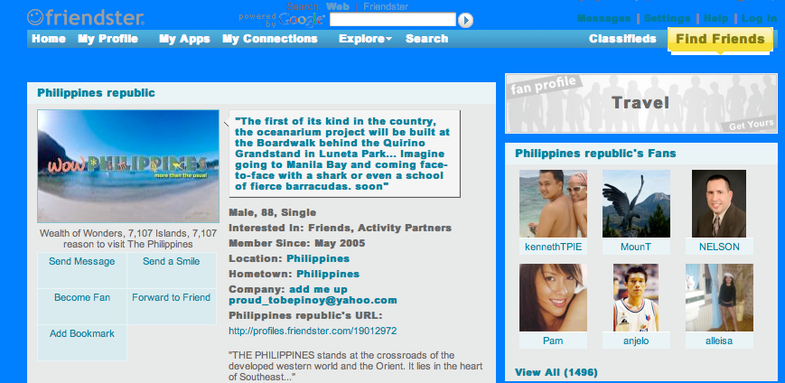Friendster “Really Big in Asia”
Oh yeah, remember Friendster? While the social networking site disappeared stateside years ago, it's still holding strong with Filipino teens

Back in 2005, Friendster was faced with a really strange problem. Or opportunity, depending upon how you looked at it. See, the social networking site was based in the U.S. and funded by U.S. advertisers, but it turned out that a massive bulk of the site’s millions of users were actually based in the Philippines. Friendster execs’ hearts—and hopes for financial solvency— sank when they realized they weren’t targeting their intended audience. Without a U.S. consumer base, their advertising would dry up. And it did.
But rather than close shop, the site simply shifted its focus to the international market. In the Philippines (and also Malaysia, Indonesia and Singapore, where the site is also popular), many consumers lack computers, and broadband connections aren’t nearly as widespread as in the West. But lots and lots of people, particularly the 18-25 crowd Friendster attracts, have cell phones. So the site started testing mobile applications . . . and here’s where we come to the present.
In May, Friendster launched a mobile site (m.friendster.com) which now boasts 52 million users across Asia, and they’re expected to roll out Friendster Text Alerts in the coming weeks. The service will send SMS updates about the activities of networked friends (we’re picturing something like Loopt here).
The kicker is that Friendster’s global strategy is seriously paying off. According to company reports, “Friendster is the seventh largest website in the world of any kind and the third largest social network in terms of traffic, with over 22.4 billion page views a month. Friendster is also first in “user engagement” among the top 5 global social networks, with visitors to Friendster.com averaging 229 minutes per month.” And you never knew.